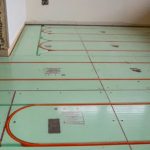Motorists make use of radar detectors in their vehicles to reduce the speed of the vehicle in case a police radar unit is detected before being ticketed for speeding. Normally, police radars and guns have integrated radar detector detectors to trap radar detectors.
Overview
Radar detectors are incorporated with a super-heterodyne receiver which includes a slightly radiating local oscillator. Thus, it is feasible to develop a radar detector detector to detect such emissions; typically, it is around the frequency of the radar being detected plus around 10 Megahertz.
How do Radar Detectors Work?
The concept of radar has to be understood before moving to its working. A radar unit radiates electromagnetic signals towards an object and watches to see how much of the signal is bounced back to the receiver. By taking several readings in sequence, the system can be used to find an object’s direction, speed, and range (distance).
Radar detector systems are similar to radio receivers: they pick up AM and FM frequency signals. In their circuitry, radar detectors emit an extremely tiny radio signal (in a process called oscillation) and listen for interference. If an operating traffic radar unit’s emissions are detected in the receiver of the radar detector, this is signaled to the driver in the form or a beep or flashing light.
Police Radar Units and Radar Detector Detectors
Police radar units work by transmitting radio waves to the target vehicle and back to the RDD. Since the radio signals pass through air at a stable speed, the detector can calculate the distance of the object based on the time taken for the radio wave to return.

When there is a moving vehicle in the path of the waves, the frequency also changes. Radar units find this variation and change it into miles per hour to determine the vehicle’s speed.
Moreover, radar detector detectors make use of different types of bands for determining the speed; the normally used bands are- K band, X band and Ka band. We will learn more about these bands in the following section.
But what about the radar detector detectors? These are especially sensitive receiver units that are mounted in the patrol vehicle. They are tuned to listen to the small offset or tiny variation between the radar detector’s received radar frequency and the generated (heterodyne) frequency that amplifies the signal and makes the radar detector more selective (able to suppress spurious signals from adjacent frequencies).
Types of Police Radar Detectors – Frequencies of Operation
The Federal Communications Commission has ordered that police radar should be operated only on particular frequency bands:
· X Band Radar (10.5 to 10.55 GHz): This band of radar can be detected easily because of its low frequency range and high power output. It can be detected from a distance of two to four miles depending on temperature, terrain, and humidity.
· K Band Radar (24.05 to 24.25 GHz): This is the most used police radar. K band has an effective clocking range of around quarter mile at the level of power used in police radar units. It can be detected from a distance of ¼ mile to 2miles.
· Ka Photo Cop (34.2 to 35.2 GHz): This was also introduced for police radar use. This unit is capable of clocking and photographing 200 vehicles in one hour. The effective range for this is 120 to 300 feet; transmission of continuous signals is one of its advantages.
· Ka Super Wide Band (33.4 to 36.0 GHz): This kind of police radar gun is being used across the country due to its high efficiency; this cannot be picked up by the other band detectors.
Do Radar Detectors Really Work?
Radar detector detectors are greatly helpful for the cops to catch hold of the speeding miscreants who try to get away with the radar detectors installed in their vehicles. We have thus seen the working concept of the police radar units as well as the radar detectors. So you ask – do radar detectors really work? Well, sure thing, you can go ahead and try it out, provided you’re willing to shrug off heavy penalties after being caught by the cops! Beware of radar detector detectors, the latest invention in radar communications, as the cops can make out that you have a radar detector and are receiving HIS signal.



Comments are closed